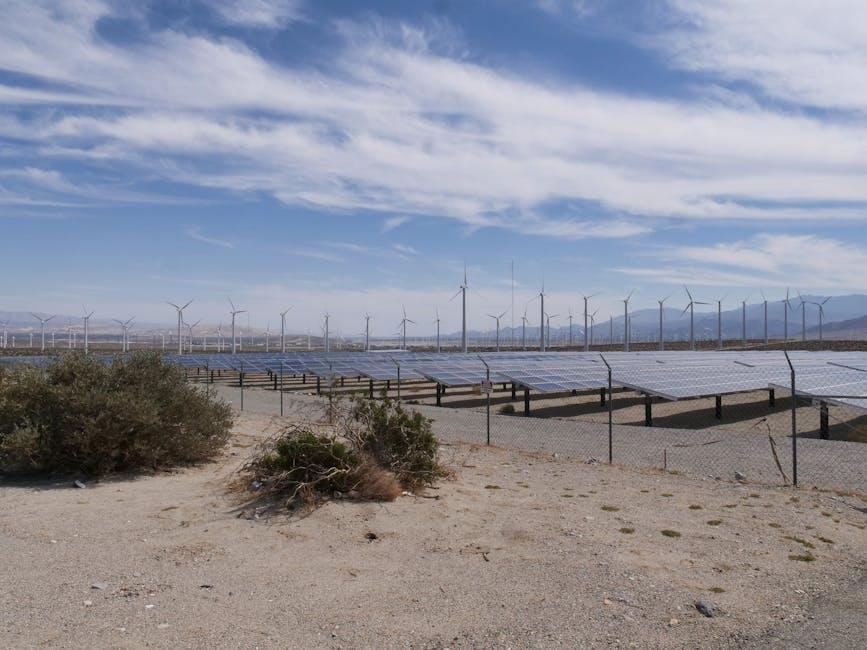In the dawning era of sustainable innovation, solar energy emerges as a beacon of hope, casting its transformative light across the globe. As the world grapples with the urgent need to shift from fossil fuels to renewable energy sources, emerging markets are stepping into the spotlight, revealing untapped potential and vibrant opportunities. These markets, once considered on the periphery of the solar revolution, are now at the forefront, driving forward with ingenuity and resilience. From the sun-drenched plains of Africa to the bustling metropolises of Southeast Asia, a tapestry of cultures and economies is weaving a new narrative for solar energy adoption. This exploration into the emerging markets for solar energy unveils a dynamic landscape where innovation meets necessity, promising a brighter, more sustainable future for all.
Exploring Untapped Potential in Emerging Solar Markets
As the global landscape shifts towards renewable energy, emerging markets present a fertile ground for solar energy adoption. These regions often boast abundant sunlight and growing energy needs, making them ideal candidates for solar investments. Sub-Saharan Africa, Southeast Asia, and Latin America are at the forefront of this movement, offering unique opportunities for innovation and growth. Despite challenges such as infrastructure limitations and regulatory hurdles, these markets have shown remarkable resilience and adaptability.
In these burgeoning markets, several factors contribute to their untapped potential:
- Increasing Demand: Rapid urbanization and population growth drive the need for sustainable energy solutions.
- Government Initiatives: Many countries are introducing policies to support renewable energy projects, including tax incentives and subsidies.
- Technological Advancements: Innovations in solar technology reduce costs and improve efficiency, making solar energy more accessible.
- Investment Opportunities: International investors are increasingly looking towards these regions for promising ventures in clean energy.
By tapping into these potential-rich markets, the solar industry can not only expand its global footprint but also contribute to the sustainable development of these regions, fostering a brighter and cleaner future for all.

Navigating Regulatory Landscapes for Solar Expansion
In the quest for a sustainable energy future, solar power has emerged as a beacon of hope, especially in burgeoning markets. However, the road to widespread solar adoption is paved with regulatory hurdles that vary dramatically across regions. For developers and investors eyeing these opportunities, understanding the diverse regulatory landscapes is crucial. In many countries, the lack of a cohesive framework can lead to uncertainty. Key considerations include:
- Permitting processes: Often lengthy and complex, requiring navigation through bureaucratic red tape.
- Grid connectivity: Securing approvals for integration into existing power grids can pose significant challenges.
- Tariff structures: Vary widely, impacting the financial viability of solar projects.
- Incentives and subsidies: While beneficial, they can be inconsistent or subject to abrupt changes.
Adapting to these conditions requires strategic foresight and an in-depth understanding of local policies. Collaborating with local authorities and stakeholders can facilitate smoother project implementation and ensure compliance with evolving regulations.
Innovative Financing Models to Accelerate Solar Adoption
In recent years, financial innovations have become a cornerstone for driving solar energy initiatives, especially in regions where traditional funding channels are either limited or non-existent. Crowdfunding platforms are breaking new ground by enabling small investors to pool resources, creating a democratized investment landscape for solar projects. These platforms not only foster community involvement but also offer a new avenue for project developers to bypass conventional banking hurdles.
Green bonds and yieldcos are also gaining traction, providing structured financial products that appeal to risk-averse investors while channeling much-needed capital into solar ventures. Another emerging model is pay-as-you-go (PAYG), which allows consumers to purchase solar systems through incremental payments. This model has proven especially effective in regions with low credit access, making solar power more affordable and accessible to underserved communities. By leveraging these innovative financial tools, stakeholders are able to craft a more inclusive and sustainable solar energy market.
- Crowdfunding Platforms: Empowering small investors.
- Green Bonds: Attracting risk-averse capital.
- Pay-as-you-go (PAYG): Facilitating incremental purchases.

Building Sustainable Infrastructure for Long-Term Solar Success
As emerging markets embrace solar energy, the emphasis on creating sustainable infrastructure becomes paramount. Ensuring that solar projects are not only economically viable but also environmentally and socially responsible is crucial for long-term success. This involves a multifaceted approach that addresses various elements critical to infrastructure development. Key aspects include:
- Robust Grid Integration: Developing resilient grid systems capable of managing intermittent solar power and distributing it efficiently across regions.
- Local Manufacturing: Encouraging local production of solar components to reduce costs and foster job creation within the community.
- Policy Frameworks: Implementing supportive government policies and incentives that encourage investment and facilitate the growth of solar projects.
- Community Engagement: Involving local communities in the planning and execution phases to ensure projects align with their needs and gain their support.
By focusing on these strategies, emerging markets can build a solid foundation for their solar energy endeavors, ultimately paving the way for a greener and more sustainable future.
In Retrospect
As the sun sets on our exploration of , it becomes clear that the horizon is bright with potential. From the sun-drenched deserts of the Middle East to the bustling cities of Southeast Asia, the transformative power of solar energy is igniting change across continents. These markets, once on the periphery of the global energy conversation, are now stepping into the spotlight, harnessing the sun’s rays to illuminate their path towards sustainable growth. As technology advances and costs continue to decline, the accessibility and appeal of solar energy will only strengthen. In this dynamic dance between innovation and necessity, emerging markets are poised to not only adopt solar solutions but to lead the charge in redefining our global energy landscape. The journey is just beginning, and as these markets evolve, they promise to light the way for a greener, more resilient future.

































